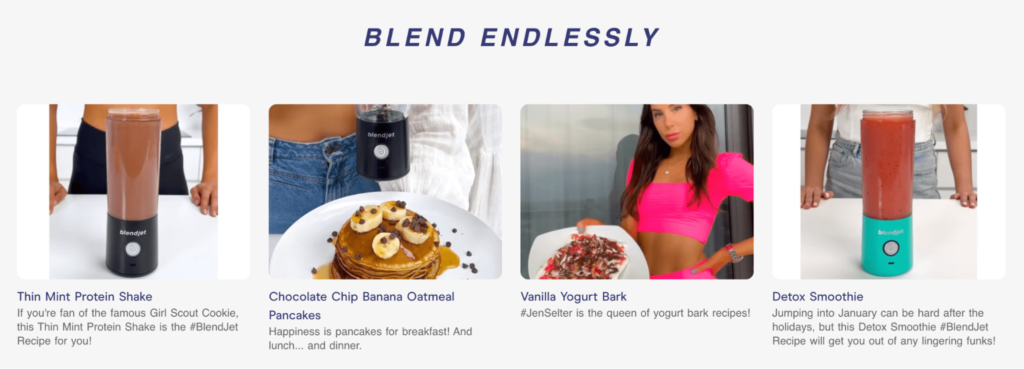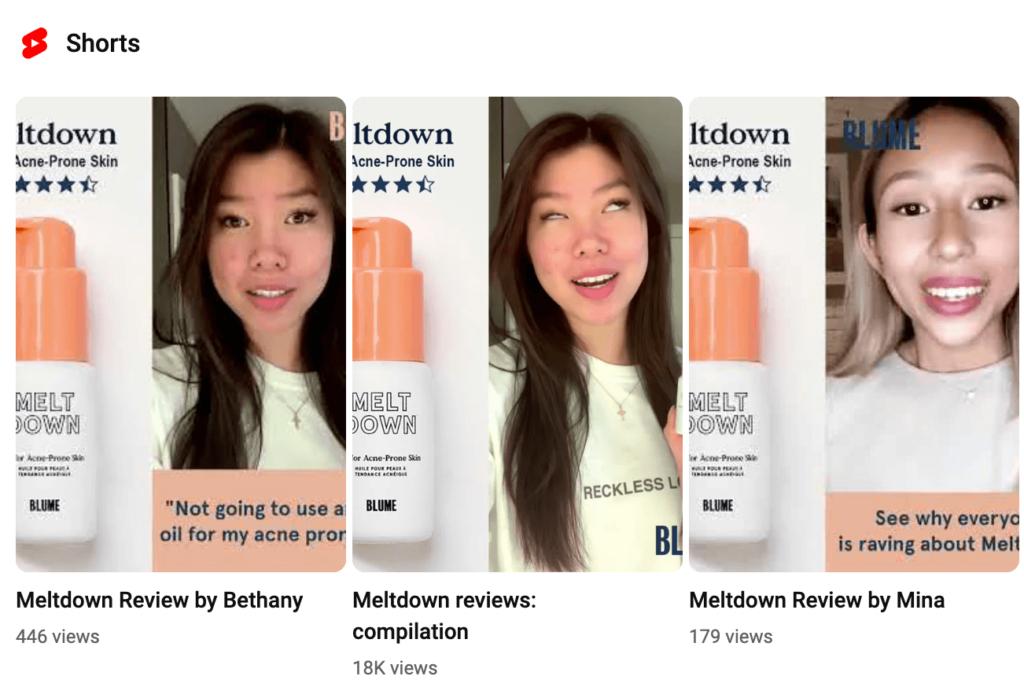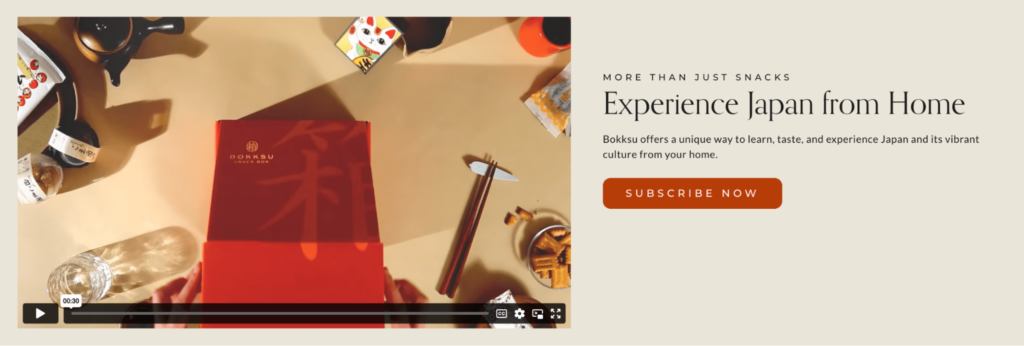In the second post of our new content series, we’re sharing the best strategies to focus on when it comes to creating content for YouTube for subscription brands. Any direct-to-consumer (DTC) brand should be curious about how they can utilize YouTube to create content that adds value to their customer experience. Whether you sell vitamins or blenders or snack boxes, there’s probably a place within the world of YouTube for your content—and the information below can help you determine if creating video content is right for your brand.
This post will dive into what YouTube is, its primary audience, and the best strategies to consider when creating your marketing plan. As a subscription business, your focus should be on content that will enhance the customer journey for your shoppers.
Key takeaways
- YouTube is a great way to connect with customers and offer videos that support your products and services.
- Providing video content can help you keep subscribers engaged and satisfied.
- There are a number of strategies to create successful YouTube content, including using user-generated content.
But first, what is YouTube?
If you didn’t already know, YouTube is an online video-sharing and social media platform. It was started in 2005 and is owned by Google. And, YouTube is actually the second most visited website after Google Search. As a platform with such a large audience and reach, YouTube is well worth investigating as a potential fit for your brand.
On YouTube, users can post videos and create playlists and channels that support their content. Unlike other social media platforms, where users follow or friend each other, YouTube uses the word “subscribe,” so users become “subscribed” to the channels they like or are interested in. This makes it easy to find the content they want to see right away by following specific channels. You may have heard “click subscribe below” or “welcome back to my channel.” These are the phrases that are synonymous with YouTube these days.
Another word to know in relation to YouTube is “vlog,” which stands for video blog. It’s a type of video that has become popular among influencers and brands looking to share more about themselves in video format. Vlogs can follow a “day in the life” format, a trip, an unboxing, or even someone just eating and talking to the camera (referred to as a “muckbang”). Of course, vlogs are curated, and not every video on YouTube is in vlog format.
Other video types you might see from brands on YouTube include:
- Product demonstration videos
- How-to videos
- User-generated content
- Behind-the-scenes videos
- Videos showing the product journey from start to finish
- Cooking or other lifestyle videos
In short, the types of videos on YouTube are endless and will really depend on your brand and what you’d like to share with your subscribers.
Who is the typical audience for YouTube?
Identifying the target audience of any social media or other platform is crucial to determining what kind of content to put out, and how much time you should spend on that platform.
We highlighted how to define your target audience in the first blog post of this series, but now let’s get into the specifics of YouTube. The biggest percentage of users on YouTube in 2022 was 25- to 34-year-olds, with 35- to 44-year-olds following right behind.
If this typical audience of YouTube doesn’t match the demographics you’re trying to target, don’t fret. YouTube has over 2 billion monthly active users, meaning your business has a fair shot at reaching your desired target audience on the platform. Plus, if you cross-promote effectively—like placing QR codes on your product packaging that lead to a helpful YouTube video, or embedding videos in your email marketing—you can create the kind of target audience you want.
4 strategies to utilize for YouTube
Now let’s get into how your brand can successfully utilize and create content for YouTube. These four strategies will provide you with the baseline knowledge needed to get started. Once you’ve begun creating, you can take a look at your analytics and see which videos are doing best, then create a solid marketing plan.
1. Provide something useful for your subscribers
It doesn’t matter who your target audience is—if viewers are bored watching your videos or don’t find them to be helpful, useful, or entertaining in some way, they won’t continue watching.
Think about what you can offer your customers that will enhance their customer experience in some way. Maybe a product demo video would be helpful for customers who are on the fence or for subscribers looking to try a new product from your store. Or, you could share recipes or other how-to videos in which you utilize your product—encouraging customers to use the items you sell.
When I’m considering buying something, especially clothing or accessories, I love to see a video in which a person is wearing or using the product. With health and wellness products, I appreciate videos that describe what the product does and how it could help me, so I can be more informed when I make a purchase. These are just a few examples of how ecommerce brands can create YouTube content that’s worthwhile and engaging for their customers.
2. Optimize the quality of your content
If you’re going to do YouTube, then you need to get specific technical and strategic elements right. Having quality video content will help you increase your brand awareness and make a good impression on future and current customers. Shopify recommends that merchants invest in sound and lighting equipment and editing tools in order to create top content for YouTube.
Here are a few other tips for subscription businesses to create the best quality video content:
- Research the optimal length for your videos, and stick to it
- Keep searchability top of mind in your video title tags, meta tags, and meta descriptions
- Post consistently and don’t be afraid to repurpose content
- Make sure audio is on point and lighting is sufficient
3. Take advantage of user-generated content
So, quality is obviously top of mind for brands looking to launch their video content on YouTube. But has your brand thought about an easy way to get quality content? That’s where user-generated content comes in. User-generated content is simply content that your consumers have already made and are looking to share, either on their social media platforms or yours, or both.
The great thing about user-generated content is that it adds a level of trust to your brand, because consumers hear an honest review from someone who isn’t associated with your company. Many online stores have already taken advantage of user-generated content by sharing videos posted by influencers, creators, and customers to their own channels. Some even reward customers who create user-generated content with special discounts or free products as a thank-you for the content they make and share.
4. Don’t forget to cross-market your videos
We would be remiss not to mention cross-promotion as part of your baseline YouTube strategy, especially for those just starting out. If you spend time and money on these videos, you want your target audience to see them! There are a number of places where brands can share their YouTube videos, such as:
- Social media posts
- Email newsletters
- Online communities
- Partner communications
- Customer portals
Another great idea is to utilize QR codes to lead customers directly to videos. You can place the QR codes on your packaging, in stores, or in other marketing materials to give customers easy access to your useful video content.
YouTube inspiration: Recharge merchants who excel at creating video content
Below are just a few examples of Recharge merchants who have taken advantage of video content and made it an essential part of their customer experience.
BlendJet
BlendJet has a dedicated recipe page on their website with their YouTube videos embedded, making it easier for customers to find recipes. But where they actually struck gold was with their ASMR videos. ASMR stands for an autonomous sensory meridian response and basically describes any sound or video stimuli that leads to a sensation in the body. By making videos using their blenders, they’ve created a whole audience of people who love to watch solely because of the satisfying audio.

Blume
Blume is another great example of a subscription merchant successfully using YouTube. Not only do they have how-to videos that make it easy for consumers to understand how best to use their skincare products, but they’ve also used YouTube Shorts (videos under one minute) to share customer testimonials. This is a great example of utilizing user-generated content to build brand trust.

Bokksu
Last but certainly not least, we have to mention Bokksu and the way they use video to enhance their customer experience. Bokksu sells Japanese snack boxes that are rich with cultural significance, and their subscribers are serious fans of Japanese culture and cuisine. So, they’ve created content that would interest these customers—their YouTube is full of videos from Japan, culture tips, unboxing videos, and behind-the-scenes looks into their snack production (which is all done by family-owned artisans in Japan).

Creating a successful YouTube channel for your subscribers
With inspiration from some of our merchants and useful strategies to get you started, ecommerce stores can have their YouTube up and running in no time. By making sure you identify your goals and target audience, you’ll be able to create content that will strike a chord with your customers and greatly enhance their customer experience.
Sources
[1] DTC ecommerce (Recharge ecommerce glossary)
[2] Creating valuable content for your subscribers: Tips for blogging (Recharge)
[3] YouTube Statistics and Trends (DataReportal)
[4] 30 YouTube statistics to power your marketing strategy in 2022 (Sprout Social)
[5] YouTube Marketing for Retail: 7 Pro Tips to Increase Your Reach With Standout Videos (Shopify)
[6] How DTC Brands Can Enhance YouTube Video Marketing Campaigns Using QR Codes (Beaconstac)
[7] Think outside the box with BlendJet founder Ryan Pamplin (Recharge)



